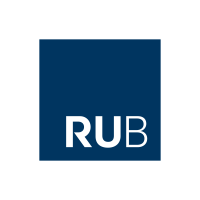Plasma-driven biocatalysis utilizes in situ H2O2 production by atmospheric pressure plasmas to drive H2O2-dependent enzymatic reactions. Having previously established plasma-driven biocatalysis using recombinant unspecific peroxygenase from Agrocybe aegerita (rAaeUPO) to produce (R)-1-phenylethanol from ethylbenzene (ETBE), we here employed CYP152 from Bacillus subtilis (CYP152BSβ). CYP152BSβ naturally hydroxylates medium and long-chain carboxylic acids, and, with short-chain carboxylic acids as decoy molecules, also converts non-natural substrates such as ETBE. To produce active CYP152BSβ overexpression and heme loading were optimized. The conversion of the non-natural substrates guaiacol and ABTS with heptanoic acid as decoy molecule and H2O2 from stock solution yielded 18.28 and 21.13 nmol product min-1 Embedded Image, respectively. These reactions also served to assess compatibility of CYP152BSβ with plasma-driven biocatalysis regarding temperature and H2O2 operating windows. To establish CYP152BSβ-based plasma-driven biocatalysis, immobilized enzyme in a rotating bed reactor (5 ml reaction volume) was then supplied with H2O2 from a capillary plasma jet operated with 1280 ppm H2O in helium. After a 120 min run time a turnover number (TON) of 18.82 mol(R)-1-PhOl Embedded Image was reached. We conclude that plasma-driven biocatalysis can be extended to other H2O2-dependent enzymes. Future efforts will be directed at increasing the TON and product range.
| Field | Value |
|---|---|
| Publisher | |
| Authors | |
| Release Date | 2025-02-04 |
| Identifier | 44edf99f-2fe2-4ce5-90cb-d24416802e3d |
| Permanent Identifier (DOI) | |
| Permanent Identifier (URI) | |
| Is supplementing | |
| Plasma Source Name | |
| Plasma Source Application | |
| Plasma Source Specification | |
| Plasma Source Properties | PlasmaDerm DBD (Cinogy, Germany) and the atmospheric pressure capillary plasma jet were used. The DBD had a copper electrode with a diameter of 20 mm, driven at VRMS = 13.5 kV and a trigger frequency of 300 Hz. For plasma treatments, 40 µl samples were placed on grounded stainless-steel supports at a distance of 1 mm from the DBD.
The RF-driven atmospheric pressure capillary plasma jet with a plasma volume of 4 mm x 0.88 mm x 40 mm (outer capillary dimension 5 mm x 1.32 m x 40 mm) was used with an input power of 6.6 +/-0.6 W for plasma ignition. The gas flow (2 slm He) was split and (partially) routed through a bubbler with cooled deionized water to enrich the feed gas with water molecules. The distance between the nozzle of the capillary jet and the sample was approx. 16 mm. H2O2 production by this capillary plasma jet was previously characterized. |
| Plasma Source Procedure | Immobilization with ReliZyme HA403 M beads was carried out as described previously [17] by applying 10 µmol l-1 CYP152BSβ to 200 mg HA403 M beads in a volume of 5 ml 100 mmol l−1 potassium phosphate buffer containing 300 mmol l-1 potassium chloride and 20% glycerol (pH 7). Binding efficiency was determined by comparing enzyme activity of the supernatant to enzyme activity of the solution initially used for immobilization. Plasma-driven biocatalysis was performed as described previously for the recombinant unspecific peroxygenase of Agrocybe aegerita rAaeUPO. In short, protein-loaded beads (100 mg) were transferred to a rotating bed reactor (build in-house, dimensions: Ø2 cm x 0.7 cm). The reactor was placed in a vessel filled with 5 ml potassium phosphate buffer (100 mmol l-1, pH 7) containing 50 mmol l-1 ethylbenzene (ETBE) and 20 mmol l-1 heptanoic acid (dissolved in EtOH). Plasma treatment was performed for up to 60 min, and 150 µl-samples were withdrawn every 5 min for analysis of product formation. To compensate the sample withdrawal and evaporation, 300 µl of potassium phosphate buffer (100 mmol l-1, pH 7) containing 50 mmol l-1 ETBE and 20 mmol l-1 heptanoic acid were resupplied. |
| License | |
| Plasma Medium Name | |
| Plasma Medium Properties | 2 slm He/H2O for Capillary Plasma Jet |
| Plasma Target Name | |
| Contact Name | Julia E. Bandow |
| Plasma Target Properties | 100 mM potassium phosphate buffer containing 50 mM ethylbenzene, 20 mM heptanoic acid and CypC enzyme. |
| Contact Email | |
| Public Access Level | Public |
| Funding Agency | |
| Project | |
| Subproject |
Data and Resources
- Figure3Guaiacolxlsx
Activity of CYP152BSβ at different H2O2 concentrations using the non-natural...
Download - Supplementary Figure1xlsx
Supplementary Figure 1: Spectral analysis of purified CYP152BSb overproduced...
Download - Supplementary Figure2xlsx
Supplementary Figure 2: IMAC based purification of CYP152BSb. Lysate was...
Download - Supplementary Figure5xlsx
Supplementary Figure 5: Plasma-driven biocatalysis with capillary plasma jet...
Download - Supplementary Figure7xlsx
Supplementary Figure 7: Plasma-driven biocatalysis with capillary plasma jet...
Download


![[Open Data]](https://assets.okfn.org/images/ok_buttons/od_80x15_blue.png)